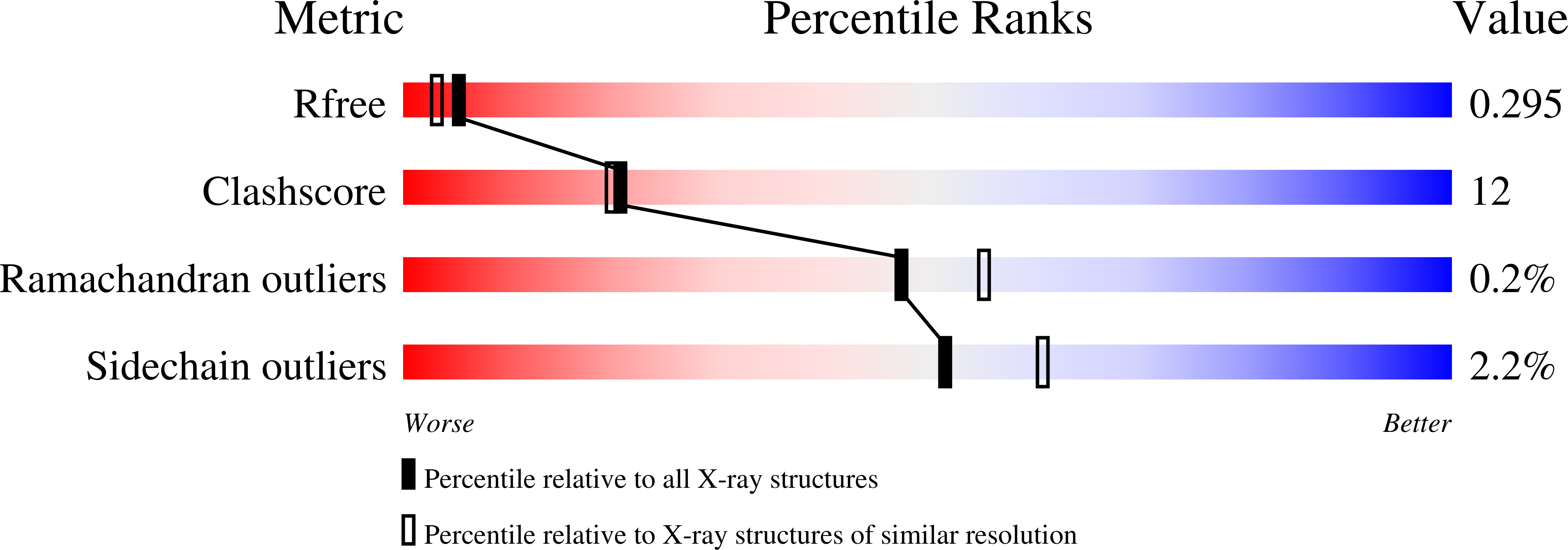Structure of Acinetobacter strain ADP1 protocatechuate 3, 4-dioxygenase at 2.2 A resolution: implications for the mechanism of an intradiol dioxygenase.
Vetting, M.W., D'Argenio, D.A., Ornston, L.N., Ohlendorf, D.H.(2000) Biochemistry 39: 7943-7955
- PubMed: 10891075
- DOI: https://doi.org/10.1021/bi000151e
- Primary Citation of Related Structures:
1EO2, 1EO9, 1EOA, 1EOB, 1EOC - PubMed Abstract:
The crystal structures of protocatechuate 3,4-dioxygenase from the soil bacteria Acinetobacterstrain ADP1 (Ac 3,4-PCD) have been determined in space group I23 at pH 8.5 and 5.75. In addition, the structures of Ac 3,4-PCD complexed with its substrate 3, 4-dihydroxybenzoic acid (PCA), the inhibitor 4-nitrocatechol (4-NC), or cyanide (CN(-)) have been solved using native phases. The overall tertiary and quaternary structures of Ac 3,4-PCD are similar to those of the same enzyme from Pseudomonas putida[Ohlendorf et al. (1994) J. Mol. Biol. 244, 586-608]. At pH 8.5, the catalytic non-heme Fe(3+) is coordinated by two axial ligands, Tyr447(OH) (147beta) and His460(N)(epsilon)(2) (160beta), and three equatorial ligands, Tyr408(OH) (108beta), His462(N)(epsilon)(2) (162beta), and a hydroxide ion (d(Fe-OH) = 1.91 A) in a distorted bipyramidal geometry. At pH 5.75, difference maps suggest a sulfate binds to the Fe(3+) in an equatorial position and the hydroxide is shifted [d(Fe-OH) = 2.3 A] yielding octahedral geometry for the active site Fe(3+). This change in ligation geometry is concomitant with a shift in the optical absorbance spectrum of the enzyme from lambda(max) = 450 nm to lambda(max) = 520 nm. Binding of substrate or 4-NC to the Fe(3+) is bidentate with the axial ligand Tyr447(OH) (147beta) dissociating. The structure of the 4-NC complex supports the view that resonance delocalization of the positive character of the nitrogen prevents substrate activation. The cyanide complex confirms previous work that protocatechuate 3,4-dioxygenases have three coordination sites available for binding by exogenous substrates. A significant conformational change extending away from the active site is seen in all structures when compared to the native enzyme at pH 8.5. This conformational change is discussed in its relevance to enhancing catalysis in protocatechuate 3,4-dioxygenases.
Organizational Affiliation:
Center of Metals in Biocatalysis and Department of Biochemistry, Molecular Biology and Biophysics, 6-155 Jackson Hall, 321 Church St. S.E., University of Minnesota Medical School, Minneapolis, Minnesota 55455-0347, USA.


















